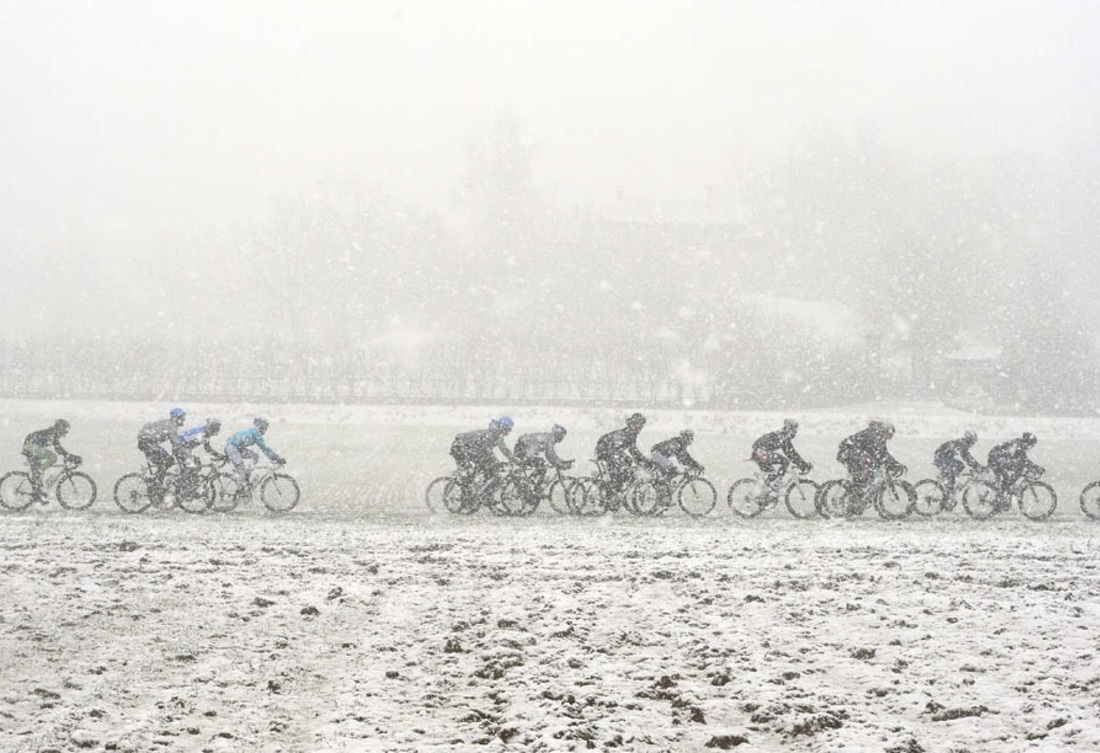But, it’s critical to go into the workouts with purpose. It’s all too easy to turn the brain off, tune into the TV screen or music and just while the time away. Indoor workouts do not have to be unduly long in order to be super effective. And, inserting a little variety into your indoor workouts not only helps break up the boredom of running or biking in place, it will also catapult you into kick-ass shape when working out outside is less than advisable.
Varying the incline and speed on the treadmill not only adds variety to the run but also creates constantly changing stimulus; it keeps the body on its toes. In a previous blog post, I talked about the value of riding inside year round, not just in the winter. Same goes for the treadmill. Three-time Mount Washington Road Race winner Eric Blake does many hill workouts on the treadmill to simulate the demanding inclines of the 7.6-mile all-uphill route.
Here are some examples of effective indoor workouts for both the treadmill and bike trainer, each limited to just 60 minutes. Certainly, you can adjust these and shorten them up to 40-45 minutes, and still get a lot out of them.
Hill Climbs
Treadmill
Warm-up
10-15min, including 4 x 15sec strides with 40sec easy between
Main Set
Increase the incline on your treadmill to a 6-8% grade and perform 6-8 x 3min at 10K race effort (not pace) with 2-3min easy, flat running between reps. You can go steeper, of course, but 6-8% is a nice mix of strength and speed so you’re not fighting gravity too much.
Cool-down
5-15min of easy jogging back down at 0% grade
Bike Trainer
Warm-up
10 min building to steady L2 watts (or HR if not tracking power)
Main Set
Repeat 4x:
3min L2 @ 90+rpm
3min L3 @ 40-50 RPM
1 min L1
3min L3 @ 50-60 RPM
1min L1
Cool-down
5min L1
Threshold Work
Treadmill
Warm-up
10-15min, including 4 x 15sec strides with 40sec easy between
Main set
3×7min as: 6min @ 10k pace & 0% - 1min @ 10k pace & 4%
Do 4min easy recovery jog between 7min intervals
Cool-down
10 min easy L1
Bike Trainer
Warm-up
10min build L1 to L2, then complete 4 x 30sec L3 watts (or HR if not tracking power) with 30sec easy L1
Main set
4×8min as: 6 min at tempo L3 - 2min at L4
Do 2-3min easy L1 recovery between each 8min interval
Cool-down
10 min easy L1
These workouts are effective because they not only stress different energy systems but also offer a nice balance between cardio stress and muscular stress to build both your threshold capacity and muscular endurance. The muscular-specific stress is of particular importance to Masters athletes, as it becomes ever more important to retain our strength as we age further past 40.
So, that’s it. Use your imagination. Determine what the goal of the workout is based on where you are at in your training cycle, and tailor the indoor workouts accordingly. Avoid going into a key workout without a plan or you risk turning it into a waste of your time. Step off the treadmill or dismount the bike trainer feeling like you accomplished something toward achieving next season’s goals.
Happy Training,
Coach Nate


 RSS Feed
RSS Feed